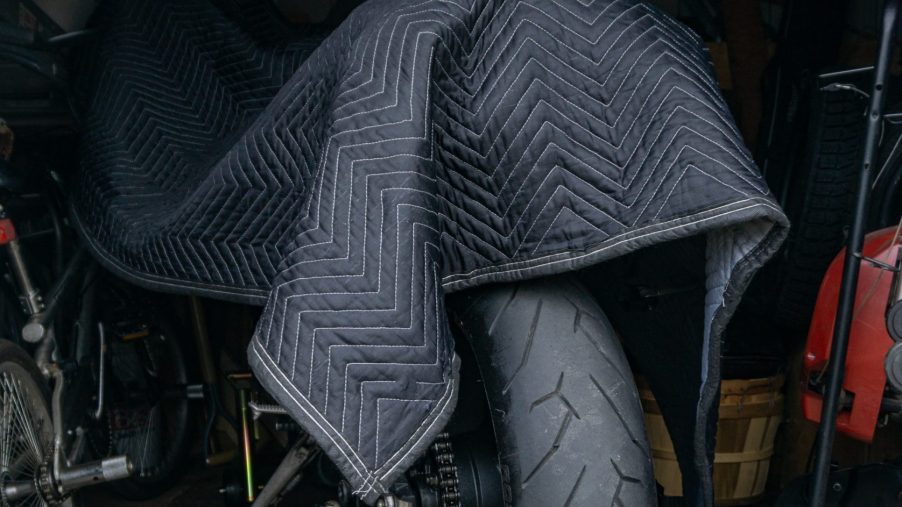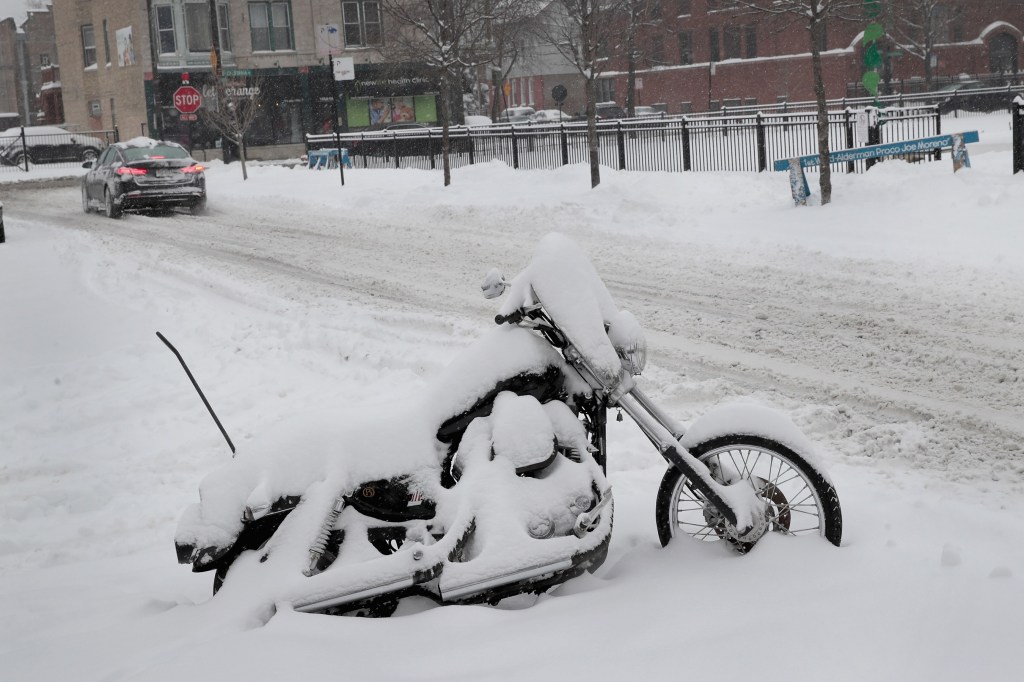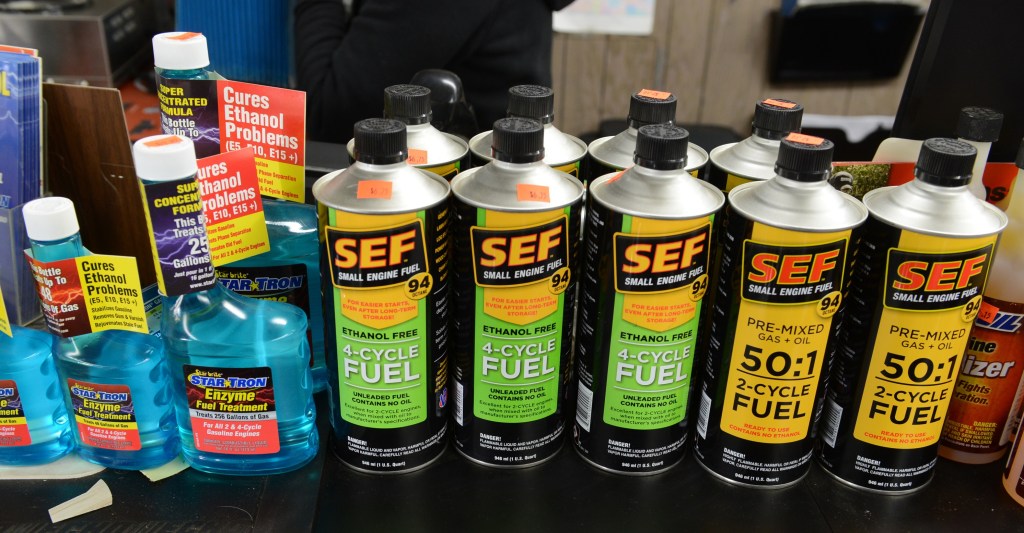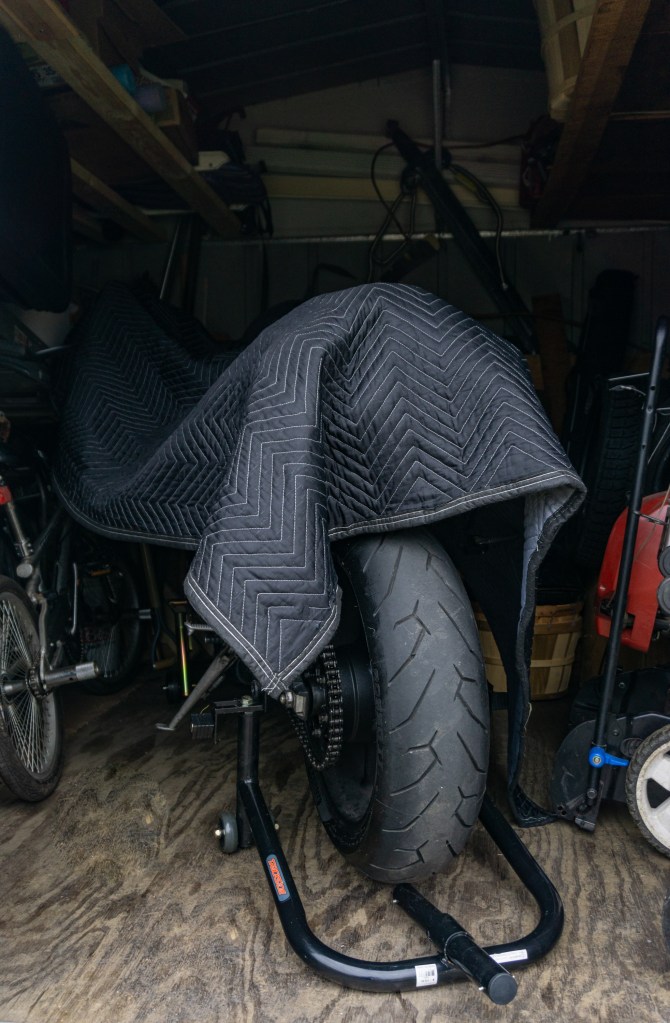
What Do You Really Need to Winterize a Motorcycle?
With the right gear—or the right locale—winter’s arrival doesn’t mean you have to stop riding. But for many motorcycle owners, the dropping mercury means it’s time for their bikes’ long naps. However, especially if you’re a newer rider, putting a motorcycle into winter storage might seem like a daunting task. So, it’s no surprise that many skip the potential headache and have a shop store their wheels. But if you follow a few simple steps, you can winterize your motorcycle like a pro.
Your gasoline is the biggest worry when you winterize your motorcycle

Even if your winter motorcycle storage spot doesn’t get freezing cold, it will see your bike sitting idle for weeks and months. That’s a significant problem for any gasoline left in its tank.
Firstly, modern gasoline contains ethanol, which boosts the octane and lowers emissions. But while those are good things in the short term, ethanol has a downside. It pulls moisture from ambient air, which means water and thus rust in your tank. Also, once the ethanol absorbs enough water, it separates from the rest of the fuel, forming a non-combustible layer. So, once you pull your motorcycle out of winter storage, you’ll find it clogged up with rust and not starting.
However, it’s not just ethanol-caused rust that clogs up injectors and jets. Gasoline has a limited shelf life because its various short-chain hydrocarbon components evaporate quickly. And the chemicals left behind—which include numerous additives—oxidize into a thick sludge. That’s even worse for your engine’s metal and rubber components than water-logged ethanol. Furthermore, you can’t avoid this sludge just by buying ethanol-free gasoline.
The best thing you can do to protect your motorcycle during winter storage is to get a fuel stabilizer

If your bike has carburetors, there’s a simple solution: drain the tank and the carbs. But that’s not practical for fuel-injected bikes, RevZilla notes.
Instead, if you want to winterize a fuel-injected motorcycle, you need to get a fuel stabilizer. Fuel stabilizers limit ethanol’s water absorption and phase separation; as well as preserve your gasoline’s various additives and hydrocarbons. So, there’s no rust, no sludge, and no trouble starting.
But you can’t just dump some fuel stabilizer into your gas tank and walk away. To winterize your motorcycle properly, add the stabilizer to a nearly-empty tank then fill it to the brim. This limits the amount of air in your tank keeps as much metal submerged as possible, all of which prevents oxidation and rust. Next, ride your bike for a few miles to make sure the stabilized fuel gets into the injectors.
As FortNine notes in the video above, not all fuel stabilizers are created equal. Some are better at preventing oxidation while others limit evaporation more effectively. I use K100, though Sta-Bil is also a solid choice, Motorcyclist says. Just make sure you don’t add too much, as that can dilute your gasoline.
Winterize your motorcycle by keeping its battery and tires in tip-top shape
Although treating your gasoline is arguably the most important motorcycle winter storage step, it’s not the only precaution. Even if your fuel is A-OK, that won’t matter if your bike can’t put out a spark. So, if you’re going to winterize your motorcycle, battery care is critical.
Whether you leave the battery in your bike or remove it, make sure it’s hooked up to a battery tender. A trickle charger is a good choice, but older models can overcharge batteries to the point of bursting. That doesn’t mean you can’t use a trickle charger, RevZilla explains, but it requires active monitoring.
A float charger, aka a ‘maintainer’ or ‘floating charger,’ is far less of a hassle. That’s because it automatically turns off once the battery is charged and only turns back on once the charge level has dropped below a certain minimum. Just make sure that the charger you’re using is compatible with your battery’s chemistry. And if you have a low-discharge lithium-ion battery, you might not a tender at all.
Next up on the motorcycle winter storage checklist is tire maintenance. Unless your bike is particularly heavy and/or uses soft or bias-ply tires, flat spots aren’t a major concern, RevZilla says. That doesn’t mean you can’t put your motorcycle up on stands (I did). But whether you do or don’t, make sure that they’re inflated to the correct pressures. And double-check that you have adequate tread depth.
What else should you do before you store your motorcycle for the winter?

In short, if you want to winterize your motorcycle, stabilize your fuel, keep your battery charged, and inflate your tires. If you follow these steps, your bike should wake up in the spring ready to hit the road. However, these motorcycle winter storage steps are also the absolute minimum. What if you wanted to go above and beyond?
If you have the time and dedication, there are additional things you can do before your bike sleeps away the snow. Firstly, wash and dry it out carefully; you can apply WD-40, wax, and silicone detailer for extra credit, RevZilla says. Next, make sure that your motorcycle’s chain is clean, lubricated, and has enough slack. Check your throttle and clutch cable slack, too, and attend to any remaining maintenance items, such as oil changes. And if you can, cover the bike up, preferably with something synthetic and breathable.
Also, your motorcycle isn’t the only riding-related thing going into storage during the winter. Since you won’t need your gear for some time, now’s a perfect chance to clean and care for it.
And once you fully winterize your motorcycle, the only thing left to do is plan that first spring ride.
Follow more updates from MotorBiscuit on our Facebook page.


